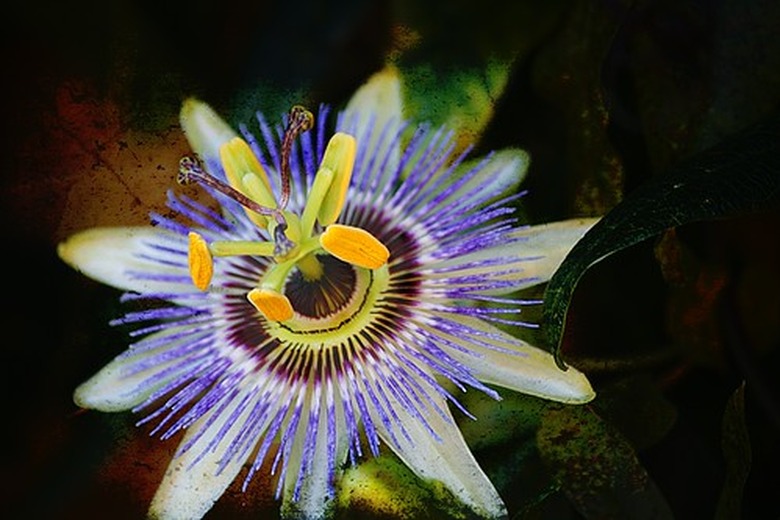The History Of The Passion Flower
In 1608, Spanish Jesuits formally presented Pope Paul V with a drawing and dried specimens of the passion flower discovered in Peru in 1569. The 16th century scholar Giacomo Bosio described the passion flower as "La Flor de las cinco Llagas," meaning the flower with the five wounds, a direct reference to teachings of the Catholic Church. It is possible that the passion flower was seen as a symbolic teaching tool in the quest to convert the native Indians of Peru to Christianity.
Symbolism
The Anglicized name, "passion" flower refers to the Crucifixion of Jesus Christ. The name and the flower itself are filled with symbolism. The five petals and the five sepals are said to represent the 10 faithful apostles (omitting Peter and Judas). The tips of the leaves suggest the point of the centurion's spear. The central flower column denotes the pillar of the scourging. The flower's tendrils resemble the whips used in the flagellation. The corona filaments are compared to Christ's crown of thorns. The three stigma are called the nails, and the five anthers reflect the five sacred wounds, while the red stains recall the blood of Christ.
- In 1608, Spanish Jesuits formally presented Pope Paul V with a drawing and dried specimens of the passion flower discovered in Peru in 1569.
- The five petals and the five sepals are said to represent the 10 faithful apostles (omitting Peter and Judas).
Passiflora
The renowned Swedish botanist Linnaeus classified the passion flower as "Passiflora" in 1745. It is estimated that there are now over 500 species worldwide. It was initially called "granadilla" for its fragrant fruit. The berry-like fruits associated with the passion flower were cultivated as crops by the Aztecs, Incas and other South American native Indians. Based on literary accounts and drawings between 1608 and 1610, it is thought that the passion flower first discovered in Peru may have been the species Passiflora caerulea, or blue passion flower.
Names
During the 18th century, the passion flower was brought to Europe from South America, the start of a horticultural journey that would take it all over the world. By the 1820s, passion flower hybrids were popular in Britain. The Spaniards who had first discovered the passion flower in South America called it "Espina de Cristo" (Christ's thorns). The German name, Muttergottes-Schuzchen, means "mother of God's star." In North America, they are also known as maypops, water lemons and wild apricots. In Tennessee, native Americans named them "ocoee," as in the river and valley of the same name.
- The renowned Swedish botanist Linnaeus classified the passion flower as "Passiflora" in 1745.
- Based on literary accounts and drawings between 1608 and 1610, it is thought that the passion flower first discovered in Peru may have been the species Passiflora caerulea, or blue passion flower.
Medicinal Benefits
The species, Passiflora incarnata, is used medicinally as a non-addictive sedative, to soothe anxiety and insomnia, among other nervous disorders. It is said to produce an antispasmodic effect and to promote digestion. The leaves of the passion flower, in both fresh and dry forms, produce a relaxing drink of tea.
Ornamentation
The passion flower remains a recognized symbol of Christ's passion. It is incorporated into the ornamentation of churches such as St. Mary the Virgin Parish Church in Gillingham, Dorset, England (see Resources). The Victorian stained glass window theme features the passion flower, as do church ritual instruments including the altar frontal and the lectern fall.
References
- Passion Flower History
- Passion Flower: Other Names
- Passiflora: Passionflowers of the World; Torsten Ulmer and John M. MacDougal; 2004
